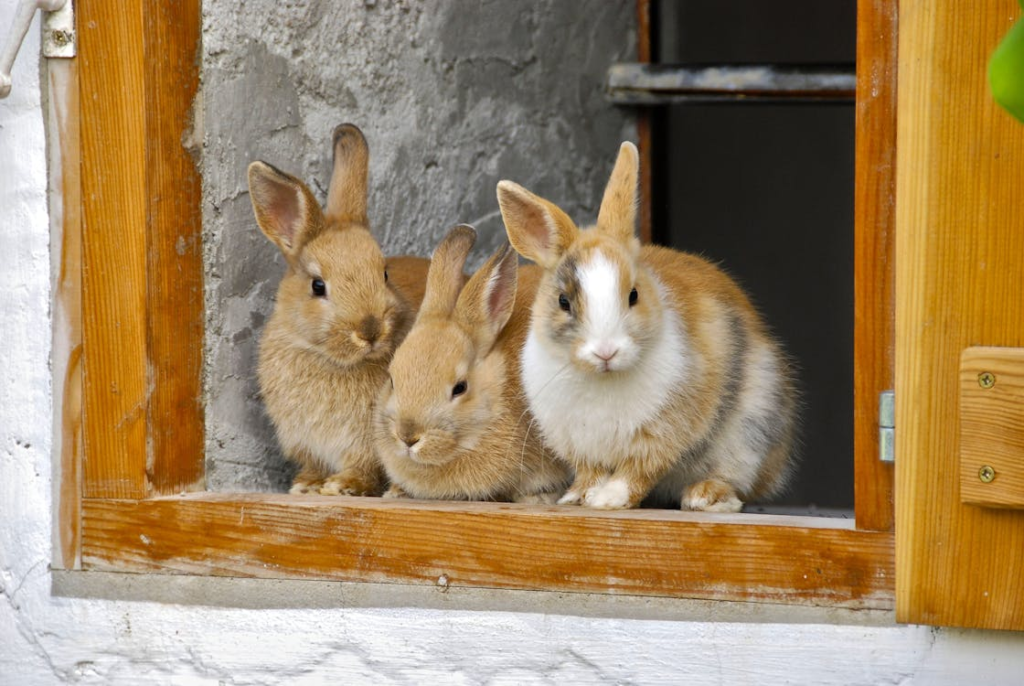
Rabbits are increasingly recognized for their potential as emotional support animals (ESAs). Known for their gentle and calming nature, rabbits can help alleviate stress, anxiety, and feelings of loneliness. But to harness their full potential as comforting companions, it’s essential to create a space where they feel secure, comfortable, and engaged. Here’s how to make a rabbit-friendly environment that promotes a harmonious relationship between you and your emotional support rabbit.
1. Provide a Safe and Spacious Habitat
The first step in creating a rabbit-friendly space is to ensure your rabbit has ample room to move, hop, and explore. Unlike many small animals, rabbits need plenty of space for exercise and mental stimulation. Aim for a large, enclosed area that allows them to stretch, jump, and roam freely. This could be a roomy indoor pen, a well-secured portion of a room, or even a dedicated rabbit-proofed room. Make sure the enclosure has smooth, escape-proof barriers that are at least 2-3 feet tall, as rabbits are surprisingly good jumpers.
2. Focus on Comfortable Bedding and Flooring

The right flooring is critical for a rabbit’s health and comfort. Hard or slippery floors can cause stress and discomfort, while soft, natural bedding helps protect their sensitive feet. Opt for rabbit-safe options like hay, paper-based bedding, or fleece blankets. Avoid materials like wood shavings or straw, which can be irritating to a rabbit’s respiratory system. Place extra layers in areas where your rabbit likes to rest, creating a cozy spot where they feel safe and secure.
3. Designate Quiet Spaces for Rest
Rabbits are naturally sensitive to loud noises and sudden movements, which can make them feel threatened. To create a truly supportive environment, provide your rabbit with a quiet, peaceful spot where they can retreat when they need a break. This could be a small, covered area within their enclosure, such as a cozy tunnel or hideaway box. By giving them a secluded space, you’re providing an opportunity for them to relax and feel in control of their surroundings—an essential factor in helping them feel comfortable as an ESA.
4. Enrich Their Space with Toys and Stimuli

Mental stimulation is essential to prevent boredom and keep your rabbit engaged. Simple toys like cardboard tubes, untreated wicker baskets, and safe chew toys can keep them entertained for hours. Interactive toys or food puzzles can also provide mental challenges that improve their problem-solving skills and keep them occupied. Additionally, rabbits are naturally curious animals, so rotating toys every few days keeps their environment interesting and engaging.
5. Use Rabbit-Proofing Techniques for Safety
When allowing your rabbit to roam freely around your home, safety is paramount. Ensure all electrical cords are out of reach or encased in protective tubing, as rabbits are prone to chewing. Remove or secure any small objects they could swallow and any items with sharp edges. Keeping household plants that are toxic to rabbits (like lilies and ivy) well out of reach is also essential for their health.
6. Maintain Cleanliness and Hygiene
Rabbits are naturally clean animals, and a clean space helps them feel comfortable and reduces stress. Regularly clean their enclosure and remove soiled bedding to prevent unpleasant odors and bacterial buildup. Most rabbits can be litter-trained with patience, which helps keep their area tidy and makes cleanup easier for you.
7. Foster a Positive Interaction Environment

To develop a deep bond with your emotional support rabbit, create a calm, stress-free environment. Approach them gently, speak softly, and avoid sudden movements. Spend time sitting quietly with them, allowing them to come to you at their own pace. Positive, gradual interactions build trust and make your rabbit feel more secure in its surroundings, enhancing its role as a support animal.
Conclusion
Creating a rabbit-friendly space is about more than just setting up a habitat; it’s about designing a safe, comfortable, and stimulating environment that encourages bonding and emotional support. By understanding their needs and respecting their natural behaviors, you’ll foster a space that not only benefits your rabbit but also strengthens the emotional connection you share. This will maximize the positive impact your rabbit can have as an emotional support animal.
Discover more emotional support animals(ESAs) here:
- Best Breeds for Emotional Support Animals That Are Allergy-Friendly
- How to Avoid Misrepresentation of Emotional Support Animals
- Can Emotional Support Animals Alleviate Social Phobia?
- Hedgehog Emotional Support Animals: What You Need to Know
Do you own an assistance animal? Register your pet today.
The Service Animal Registry of California invites you to have your assistance animal registered in order to designate its status. We also encourage you to take our online classes so you can be fully aware of your rights and gain more knowledge about your support animal.
Finally, we present to you our book entitled, “ASSISTANCE ANIMAL LAWS: LEARN YOUR RIGHTS REGARDING SERVICE ANIMALS, EMOTIONAL SUPPORT ANIMALS, THERAPY PETS, AND OTHER DOGS, CATS, AND ASSISTANCE ANIMALS” to provide you with a complete education on assistance animals. Purchase your copy of the book by clicking the image below.

